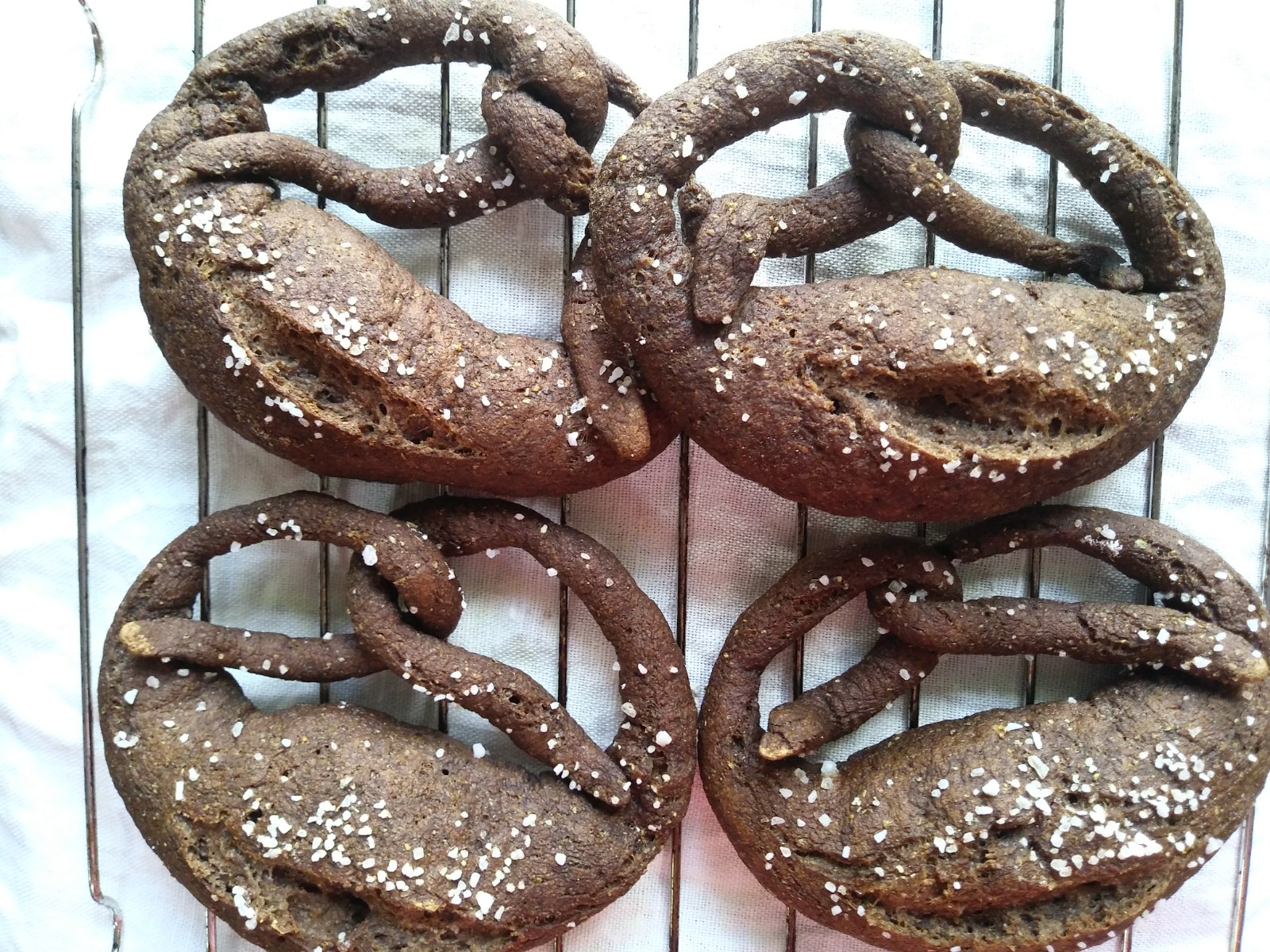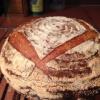No. You didn’t read it wrong.
It’s goat cheese with milk chocolate. Not in their chucky form but melted into the dough. Confession: I absolutely hate the idea of chocolate cheesecake. I mean, both of them are heavenly food on their own but when combined together? Neither of them can be tasted. Well, to me at least. Many of you would disagree. Still, I’m not changing my mind. Then what’s up with this bread? The thing is, the thought of making chocolate bread came to my mind again yet I didn’t want to include any dried fruits (because I dislike the combo of chocolate and dried fruits as well…). Using nuts only seems a bit boring. Therefore a quick research was conducted and the goat cheese chocolate truffles caught my attention. I figured that the strong flavour of goat cheese might go well with the sweetness of milk chocolate so this bread is born.

Chocolate Goat Cheese Sourdough with Cashews
Dough flour:
210g 70% Whole spelt flour
90g 30% Freshly milled oat flour
For leaven:
10g 3.3% Starter
20g 6.7% Bran shifted out from dough flour
20g 6.7% Water
For chocolate-goat-cheese mixture:
68g 22.7% Soft goat cheese
33g 11% Milk chocolate
For dough:
280g 93.3% Dough flour excluding bran for leaven
116g 38.7% Chocolate-goat-cheese mixture
196g 65.3% Water
49g 16.3% Whey
50g 16.7% Leaven
15g 5% Tom’s Alt Altus, powdered
9g 3% Vital Wheat Gluten
5g 1.7% Salt
Add-ins:
30g 10% Toasted Cashews
___________
305g 100% Whole grain
270g 88.5% Total hydration (the chocolate-goat-cheese mixture should have added a significant amount of moisture as well)
Shift out the coarse bran from the dough flour, reserve 20g for leaven. Mix the rest back into the dough flour or soak them in equal amount of whey taken from dough ingredients for a minimum of 4 hours.
Combine all leaven ingredients and let sit until doubled, about 6 hours.
Bring a shallow pot of water to a boil. Turn off the heat. Cut the goat cheese and chocolate into small pieces and put them into a bowl covered by cling wrap. Place the bowl into the pot. Put on the lid and let steam until the chocolate and cheese are melted, about 10 minutes. Stir until smooth then set aside until needed.
Roughly combine all dough ingredients. No autolyse since it’s mostly spelt. Let it ferment for 6 hours.
Fold in the cashews and let the dough rest for 20 minutes. Stretch and fold for a few times and let it rest for 20 more minutes. Shape the dough and put in into a banneton. Leave it on the counter for 20 minutes before retarding for 10 hours.
Take the dough out of the fridge and let it rest on the counter for 30 minutes. At the same time, preheat the oven at 250°C/480°F and pre-steam at the last ten minutes.
Score the dough and bake at 250°C/480°F with steam for 15 minutes then without steam for 25 minutes more or until the internal temperature reaches a minimum of 205°F. Let cool for at least 2 hours before slicing.

There’s little oven spring as the dough is already fully proofed out of the fridge. The crust is very crackly and has a rather matt colour. I suspect that it has something to do with that uncommon addition of melted goat cheese and chocolate. The scoring is far from perfect but it’s already one of my better scores.

I failed once at making Tom’s Alt Altus: it was burnt completely. This time, the starter dilution was skipped so that I was left with a thicker paste. Also, the oven temperature was turned down to 300°F. And what’s the result? A great success! Thanks Tom for the brilliant idea! It surely added some toastiness and depth to this loaf.

This bread smelled divine when it’s baking. You can definitely taste the goat cheese so it is not one for goat cheese haters. It’s noticeably tangy but with a subtle sweetness from the chocolate. Unexpectedly, this closed-crumb loaf has a very crumby but also a porridge-bread-like texture. It’s something I’ve never had before.
_______
Some pretzels made with a baked baking soda bath.







 .
.













